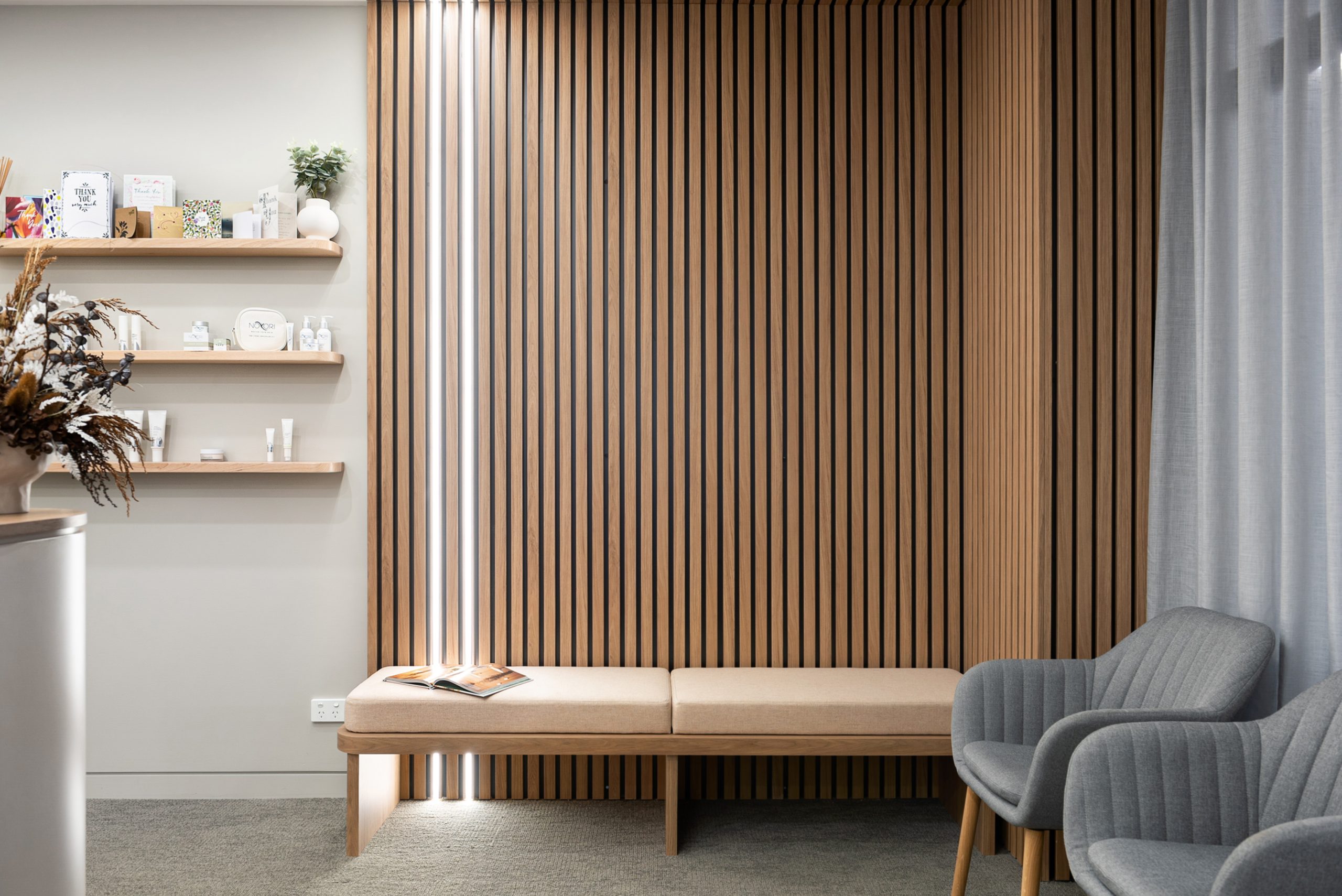
There is so much more to place than just space. A space is physical. Somewhere you occupy. A place is something that transcends location. A place creates an experience, a memory, a feeling, a sense of community. A place can nurture, comfort and heal. It can inspire, motivate and enlighten.
Creating a well-place that inspires confidence and offers comfort is a fantastic start to the practitioner-patient relationship. Lower anxiety will encourage people to attend regular check-ups and look after their health.
A well-designed practice will have patient flow at its heart. Movement throughout the practice should be seamless. This improves efficiency and productivity, particularly in busy practices with multiple rooms and practitioners.
Every practice manager has felt the costs and inconvenience of hiring and training new staff. Retaining talent is a top priority. A well-place creates a strong workplace culture. Not only will people stay loyal to your practice, but you will become known as an employer of choice.
It costs around five times more to attract someone new to your practice than it does to retain an existing patient. A well-place is a worthwhile investment that will pay off for many years.
The first stage of creating a well-place is to ask questions and listen.
Once you have a vision for your well-place, the ten core concepts of the Well Building Standard™ will help you make it a reality. Those concepts are:
Let’s look at a summary of each concept.
Air quality is important from both a comfort, satisfaction and safety perspective. Workplace Health & Safety laws cover some aspects of air quality but ticking boxes can miss the point of a well-place. Discuss your staff’s perception about the air quality in your healthcare practice. Ventilation (natural and mechanical) and HEPA (high efficiency particulate air) filtration are particularly important. Negative pressure rooms can further protect patients and staff from contaminated air.
Nearly two thirds of the human body is made up of water so healthy drinking water is crucial. The WELL Building Standard covers this as well as moisture management (e.g. condensation, leaks, mould).
It can be tempting to eat unhealthy snacks and takeaway lunches. Changing this starts with leadership from the top. Provide fresh fruit. Include comfortable and clean food preparation areas within your healthcare design plans. Most importantly, practise what you preach!
Natural light is typically cited by employees as the biggest contributor to their well-being. As well as being desirable, exposure to natural light reduces the likelihood of Seasonal Affective Disorder (SAD), a condition that causes depression. Windows and skylights should be incorporated into the medical design. Smart lighting is the next best thing to natural light.
A well-place promotes physical activity. Shower and locker facilities have a small footprint and will encourage staff to take exercise en route to work or during the day.
Motivation, mood and focus are all influenced by thermal comfort. Although it is impossible to keep everybody happy, thermal zoning, individual room controls and humidity control will assist greatly.
Transmission of noise occurs through walls, above walls and through walls. Acoustic panels will help to absorb noise and reverberation. Sound masking, such as music, does just that and provides a comforting ambience for patients and staff.
Using natural and sustainable materials in your practice will make your staff proud to work for a healthcare practice that proactively cares for the environment. Bamboo and copper are good for both hygiene and the environment. If natural flooring is outside the budget, consider wood-effect flooring and faux stone tiles.
Healthy minds lead to a productive workplace and patients with a proactive approach to their health. Both these results are nectar to your business. This is where the ‘emotional design’ of a practice becomes important. Think about the emotional journey of a patient as they enter your practice and the emotional journey of your staff during their workday. How can you make your practice a great place to be—a truly well-place?
Feeling part of a community makes human beings feel safe and accepted. For staff, communal areas for meetings and breakout time will help people interact. Consider diversity and inclusion programs plus social clubs and events.
Embracing the concepts within the WELL Building Standard will produce tangible results and benefits to your healthcare practice. Building a well-place is an evolving journey that you can add to and improve over time. Make a start today!
For more information, please call Evoke Projects on 1300 720 692.